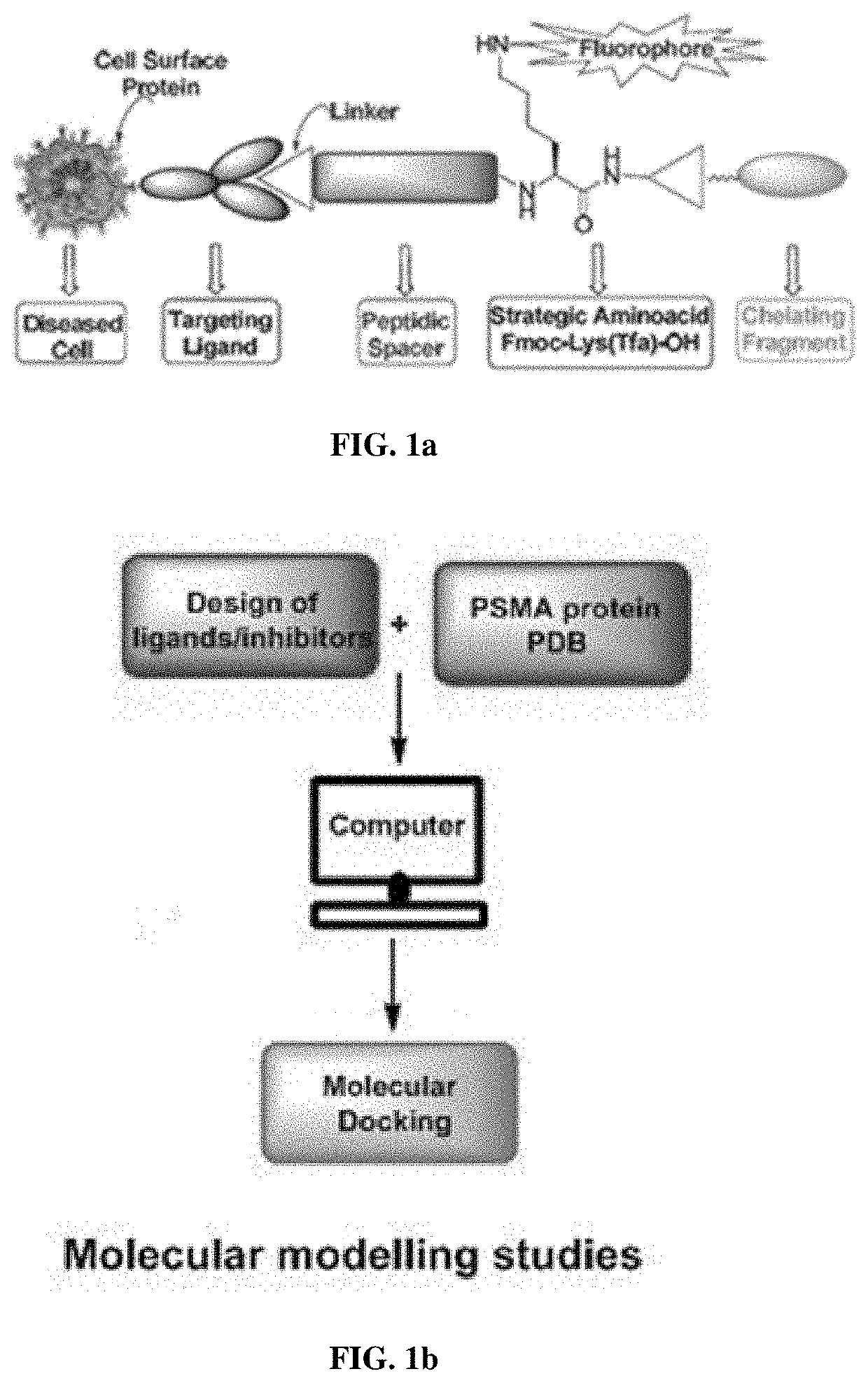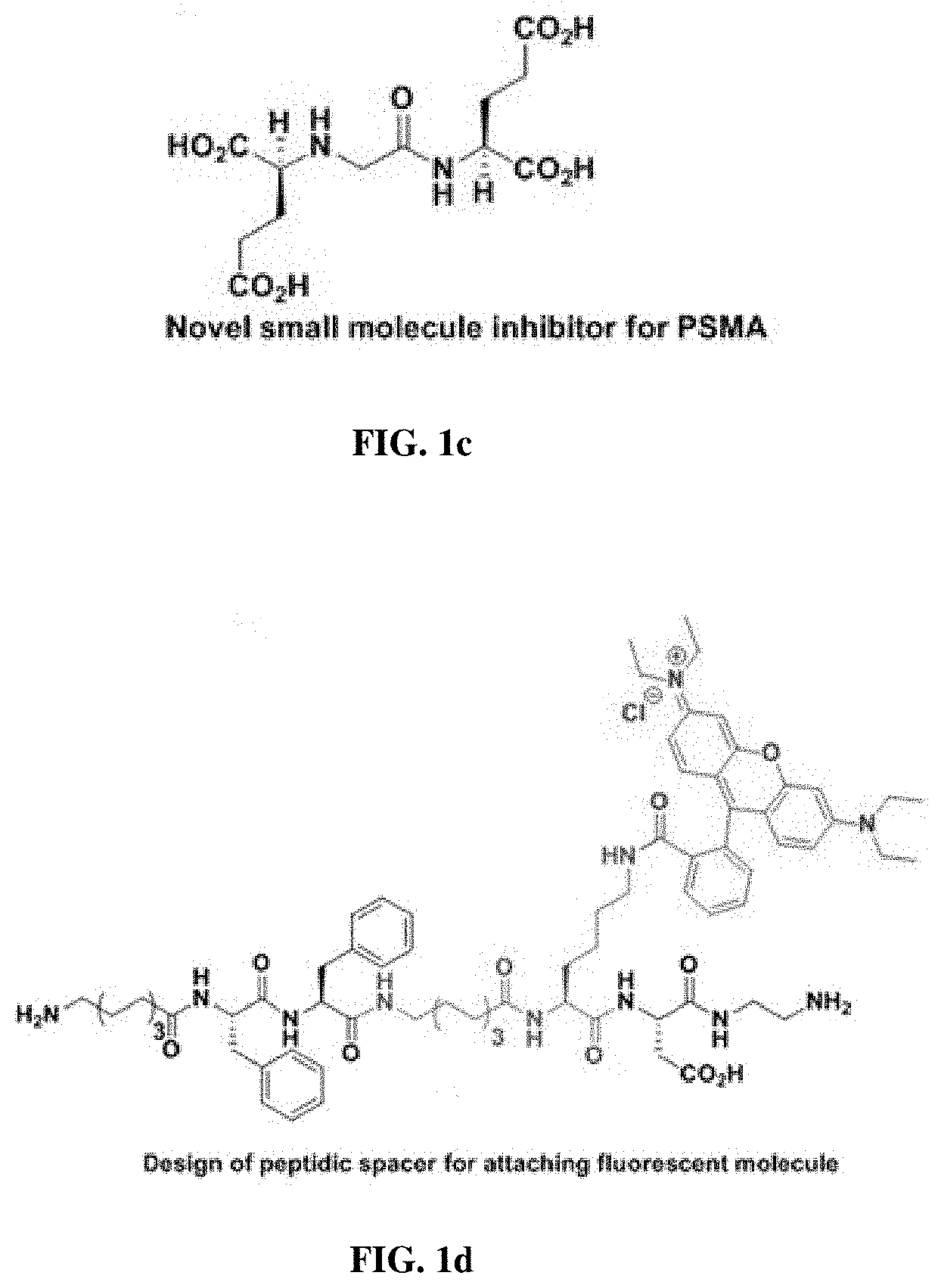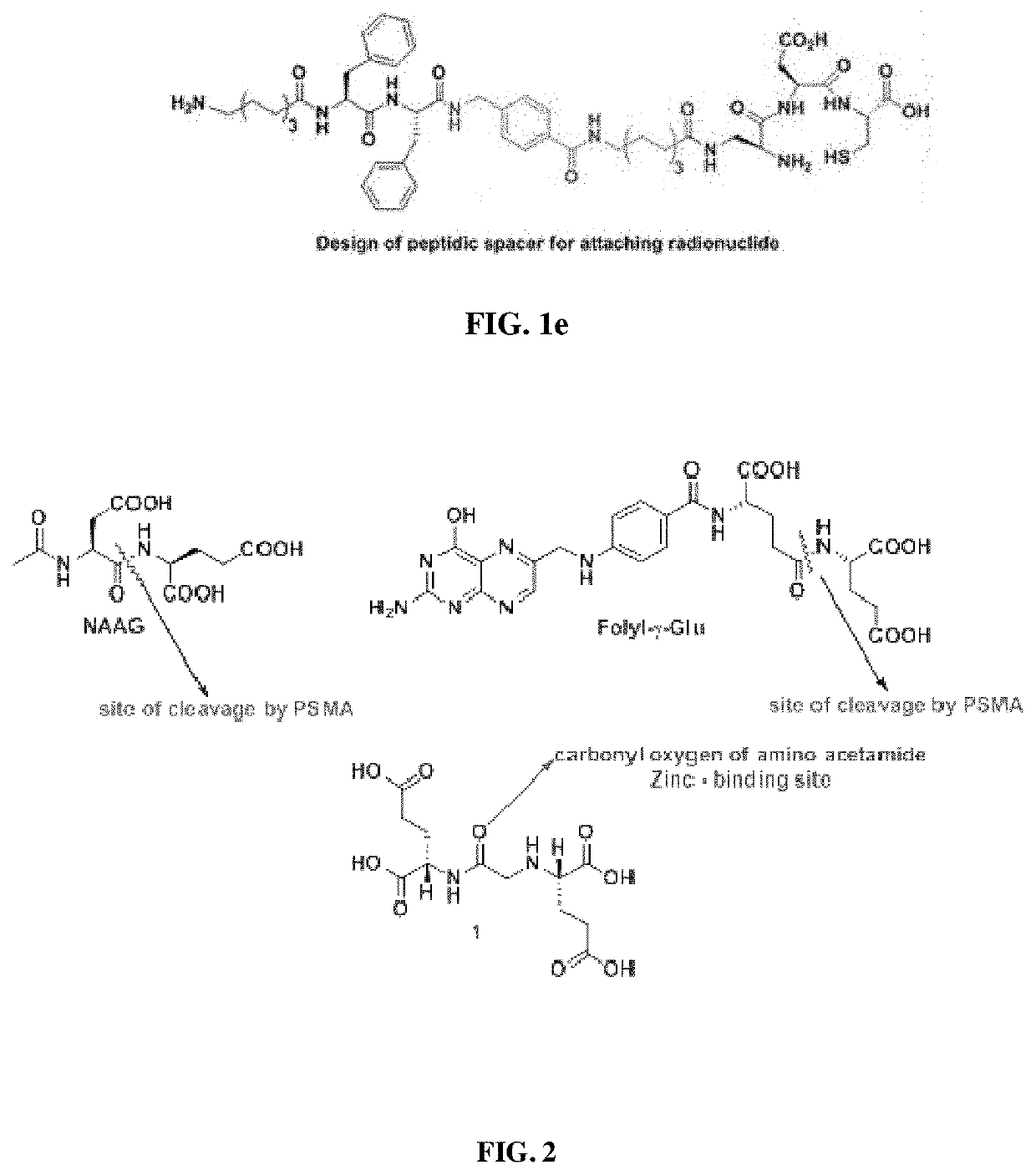Small molecule inhibitors for early diagnosis of prostate specific membrane antigen cancers and neurodegenerative diseases
a inhibitor technology, applied in the field of small molecule inhibitors for early diagnosis of prostate specific membrane antigen cancers and neurodegenerative diseases, can solve the problems of limiting the success of these antibodies in diagnosis of this kind of cancer, psa diagnostic tests are widely criticized, and biopsy is extremely painful and expensive. , to achieve the effect of cost-effectiveness and enhanced binding affinity
- Summary
- Abstract
- Description
- Claims
- Application Information
AI Technical Summary
Benefits of technology
Problems solved by technology
Method used
Image
Examples
example 1
rocedure for the Synthesis of 2-Bromoacetamide Intermediates 13a-c
[0125]Bromoacetic acid 12 (0.208 mg, 1.5 mmol), dicylohexylcarbodiimide (0.619, 3.0 mmol) were dissolved in freshly distilled dichloromethane (8 mL), and the resulting mixture was stirred at 0° C. for 30 min. A solution of 11a-c (1.0 mmol) in dichloromethane (5 mL) was added to the reaction mixture. The reaction mixture was stirred for 12 h at room temperature. The progress of the reaction was monitored by thin layer chromatography (TLC). After completion of the reaction, dichloromethane was evaporated under reduced pressure and ethyl acetate was added to the residue of the crude reaction mixture. Dicyclohexyl urea (DCU) was filtered off from the reaction mixture through glass funnel by using Whatman filter paper. The ethyl acetate layer was concentrated under reduced pressure and the crude products 13a-c were purified through column chromatography using distilled 15-25% ethyl acetate in hexane.
example 2
zyl 1-tert-butyl 2-(2-bromoacetamido) pentanedioate (13a)
[0126]Yellowish gummy liquid (yield=60%), Rf=0.56 (EtOAc:hexane=1:4); IR (CH2Cl2): 3322 (N—H), 3032, 2975 (═C—H), 2928 (C—H), 1729 (C═O), 1652 (N—H), 1537 (C═C), 1454 (C—H), 1166 (C—O), 750, 699 (═C—H) cm-1. 1H NMR (400 MHz, CDCl3): δ 7.37-7.31 (m, 5H), 7.05 (d, J=7.28 Hz, 1H), 5.13, 5.10 (ABquartet, J=13.28 Hz, 2H), 4.49 (ddd, J=7.28, 5.24, 5.14 Hz, 1H), 3.83 (s, 2H), 2.49-2.38 (m, 2H), 2.27-2.20 (m, 1H), 2.07-1.99 (m, 1H), 1.46 (s, 9H). 13C NMR (100 MHz, CDCl3): δ 172.5, 170.3, 165.8, 135.6, 128.6, 128.3, 128.2, 83.0, 66.6, 52.8, 30.1, 28.6, 27.9, 27.3. HRMS (ESI) m / z [M+Na]+ calcd. for C18H24BrNO5, 436.0730, found, 436.0766.
example 3
Butyl-2-(2-bromoacetamido)-3-(4-hydroxyphenyl) propanoate (13b)
[0127]Colourless gummy liquid (yield=70%), Rf=0.4 (EtOAc:hexane=1:4); IR (CH2Cl2): 3341 (O—H), 3275 (N—H), 2979 (═C—H), 2933 (C—H), 1733 (C═O), 1657 (N—H), 1518 (C═C), 1456 (C—H), 1155 (C—O), 750, 698 (═C—H) cm-1. 1H NMR (400 MHz, CDCl3): δ 7.03 (d, J=8.44 Hz, 2H), 6.93 (d, J=7.32 Hz, 1H), 6.73 (d, J=8.44 Hz, 2H), 5.96 (brs, 1H), 4.71-4.63 (m, 1H), 3.85, 3.81 (ABquartet, J=13.80 Hz, 2H), 3.09-2.96 (m, 2H), 1.43 (s, 9H). 13C NMR (100 MHz, CDCl3): δ 170.1, 165.3, 155.2, 130.6, 127.2, 115.4, 82.9, 54.3, 37.1, 28.7, 27.9. HRMS (ESI) m / z [M+Na]+ calcd. for C15H20BrNO4, 380.0468, found, 380.0479.
PUM
| Property | Measurement | Unit |
|---|---|---|
| survival time | aaaaa | aaaaa |
| survival time | aaaaa | aaaaa |
| dissociation constant KD | aaaaa | aaaaa |
Abstract
Description
Claims
Application Information
 Login to View More
Login to View More - R&D
- Intellectual Property
- Life Sciences
- Materials
- Tech Scout
- Unparalleled Data Quality
- Higher Quality Content
- 60% Fewer Hallucinations
Browse by: Latest US Patents, China's latest patents, Technical Efficacy Thesaurus, Application Domain, Technology Topic, Popular Technical Reports.
© 2025 PatSnap. All rights reserved.Legal|Privacy policy|Modern Slavery Act Transparency Statement|Sitemap|About US| Contact US: help@patsnap.com



